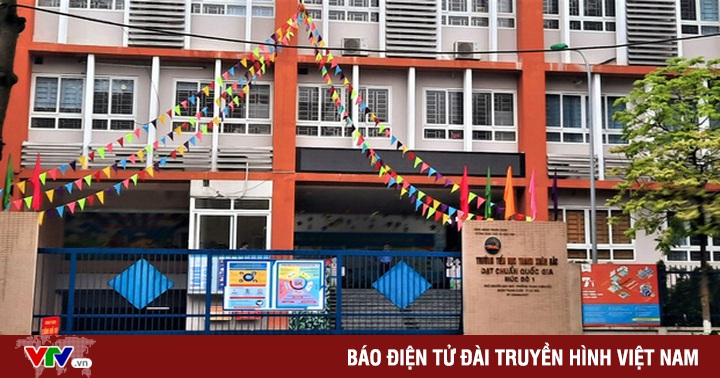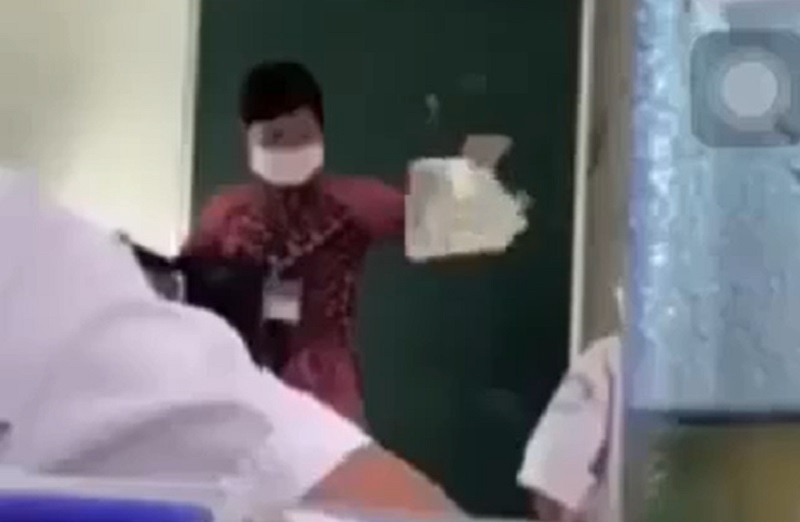Options for students after graduating from grade 9
After completing secondary school, students can continue their education, choose a work-study system or turn to vocational training.
The national education system provides a variety of training forms, serving the different needs of learners after lower secondary school. Graduating from 9th grade, students have options: Continuing their education (entering public or private high schools), Studying while working (continuing education system) and Apprenticeship (entertainment center). vocational education, secondary schools, vocational colleges).
The most popular choice today is public high school system, with the advantage of standard training quality and low cost. Therefore, the level of competition for public schools is quite high, especially in big cities like Hanoi and Ho Chi Minh City.
However, families with good economic conditions can choose to study in non-public schools, in private or international schools. Most of these schools enroll students by entrance examination, so the competition for entrance is not high (except for some famous private schools).
Continuing Education System often rated as the “last option” for students who want to complete high school but do not have the academic qualifications to enter public school or the financial condition to enter a private school. Although this educational model was originally opened to serve those who have the goal of lifelong learning or learning by doing.
Currently, most district-level administrative units have at least one vocational education center – continuing education. These centers have a variety of programs for students to choose from: continuing education only; both continuing education, vocational training or just vocational training (intermediate, college).
With the continuing education program at the high school level, students only have to study 7 compulsory subjects, much less than the high school program with 12 subjects and many other educational activities. When taking the high school graduation exam, students in this system do not have to take the Foreign Language and Citizenship Education exams. They also receive encouragement points if they have a certificate of foreign language or computer science. The study period and continuing education tuition fees are lower, but the high school diploma is equivalent to other high schools.

Students of intermediate level “9+3” of Ho Chi Minh City College of Economics and Technology during class in February. Photo: Manh Tung
The other option than the above two paths is switch to vocational training, helping learners to actively shorten the training time and get a job sooner. Because there are many options, the orientation and threading for students is mandatory in schools. The project “Vocational education and student stream orientation in general education for the period 2018-2025” approved in 2018 has specific goals: 25-30% of secondary school graduates study in institutions of higher learning. vocational education department.
Based on this goal, localities have assigned targets right from the time of enrollment in grade 10. For example, in Hanoi this year, with about 129,000 students graduating from lower secondary schools, 27,000 children will study at private schools, near 13,000 studied at continuing education centers and more than 12,000 studied at vocational education institutions. Similarly, in Ho Chi Minh City, with about 100,000 students graduating from secondary school each year, nearly 20,000 students choose to continue their studies at vocational and continuing education centers.
Career counseling and streamlining activities are therefore focused from 9th grade. Before the date of registration of aspirations to 10th grade, schools are oriented, helping students understand their own abilities, and provide information about their careers. choice, advantages and disadvantages of each training model, for them to decide their future.
Mr. Pham Xuan Tien, Deputy Director of Hanoi Department of Education and Training, affirmed that this is an important activity that is maintained every year.
Based on the policy of the Department, the Education Departments at district and district levels will develop detailed career guidance plans and activities. Many districts organize career counseling days with the participation of local secondary schools. At this event, representatives of schools and vocational training centers of 9+ system also attended. These units design booths, distribute leaflets, and have consulting desks to answer questions from students and parents.
However, recently, many parents have complained about this counseling activity disfiguredbecomes behavior forcing poor students to drop out into 10th grade, in order to avoid affecting the performance of schools. Cau Giay district, Hanoi is home to two secondary schools facing this allegation. Mr. Doan Tien Trung, Deputy Head of Education Department of Cau Giay District, admitted that there may be a misunderstanding between the school and parents during the counseling process.
Before this fact, Mr. Tien emphasized: “Students and their families make decisions on a voluntary basis, the school and teachers absolutely do not force them in any form.”

Students of continuing education system, Nha Be Vocational and Continuing Education Center, Ho Chi Minh City during a cultural class in February. Photo: Manh Tung
Similar to Hanoi, this time, secondary schools in Ho Chi Minh City are also organizing student counseling activities. The principal of a school in the inner city said that the content of streamlining and career guidance has been implemented by the school since the last two years of high school.
“For very weak children, the school will advise them on an appropriate path, such as continuing education. However, the final choice is still parents and students,” the principal said.
Reporters group
at Blogtuan.info – Source: vnexpress.net – Read the original article here



